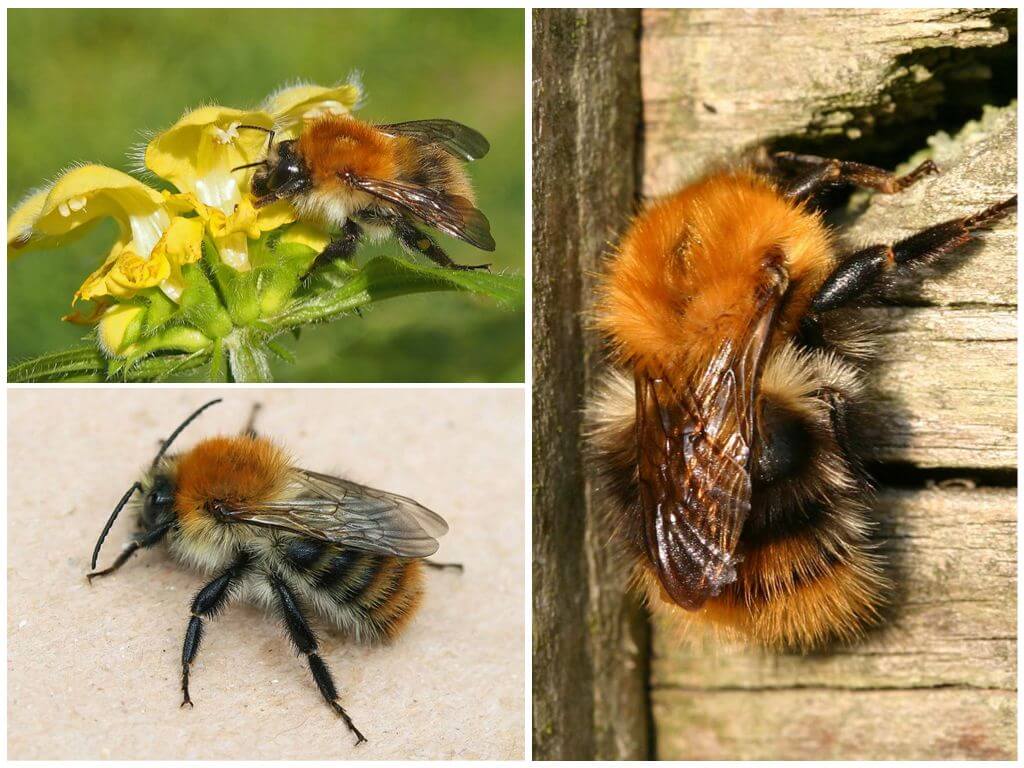Description and photos of the field bumblebee
The field bumblebee is closely related to bees. It belongs to the type of arthropods and is a representative of the order of hymenoptera. His business card can be called the motley red-black color of fluffy hairs, which covers almost all of his body. To confuse this insect with others is impossible. Hairy relatives of bees are known as good pollinators of flowers. They are indispensable helpers of gardeners and summer residents, pollinating fruit and berry and vegetable crops.
Appearance
Representatives of this type bumblebee have slight differences in size.depending on gender. The largest are females, which are queen bees in the bumblebee family. The length of their body can reach 2 cm. Males have a smaller body size - about 14 mm in length. By working individuals are barren individuals of the female. They are the smallest insects of this species, having a body length of 9 - 14 mm.
On a note!
To distinguish the field bumblebee from other species, you need to carefully look at him. On the back of the shaggy arthropod is dominated by red hair with a slight impregnation of black. On the abdomen, the yellow villi are mixed with the white, as on the sides of the insect. The forehead of the bumblebee is covered with light villi. In females, a small black speck in the form of a triangle can be seen on the top of the breast.
Habitat
The field bumblebee is widespread on the mainland of Eurasia from Western Europe to the Far East. Mostly in middle and southern latitudes. The insect prefers to build nests on the ground or under the ground, but it is also possible to meet them in other places:
- abandoned animal burrows or bird nests on the ground;
- soil cavity;
- hollows and crevices of trees;
- fallen leaves;
- the gaps between the boards of wooden buildings.
The name “field” does not mean that insects pollinate only field and meadow plants. They are also found in gardens, forests, and vegetable gardens. In large cities, they can also be seen. But field bumblebees give their preference to lowland meadows, where red clover grows.
Nutrition and reproduction
After wintering, females capable of breeding are looking for a suitable place to set up a nest. Having laid several egg clutches, she takes care of the offspring herself. When the number of individuals in the nest reaches the first hundred, it no longer leaves the nest and is engaged only in reproduction.
On a note!
Male field bumblebees have no stinger. Only females can sting, but they do it extremely rarely.
Working females unable to lay eggs are engaged in the delivery of nectar and pollen to the nest. Male drones are responsible for arranging cells for posterity and food storage. They do not collect nectar and do not pollinate plants. The nectar processed by insects turns into honey, which is a nutritious food to support the life of the bumblebee family.






